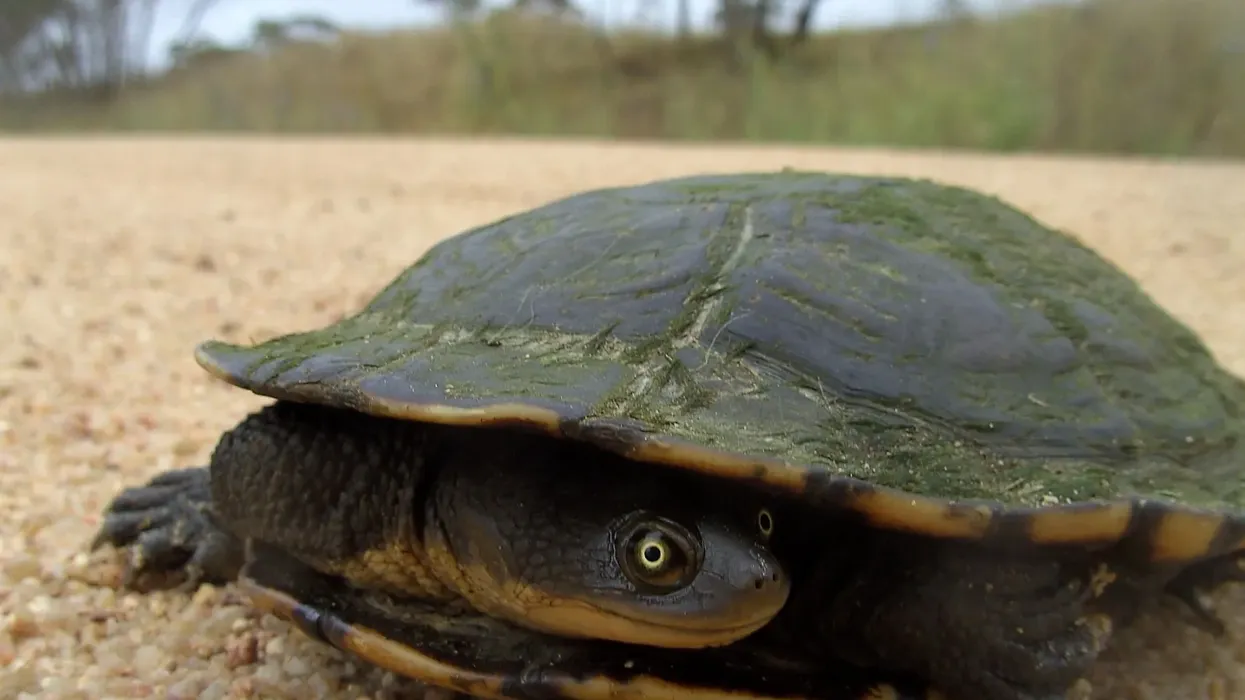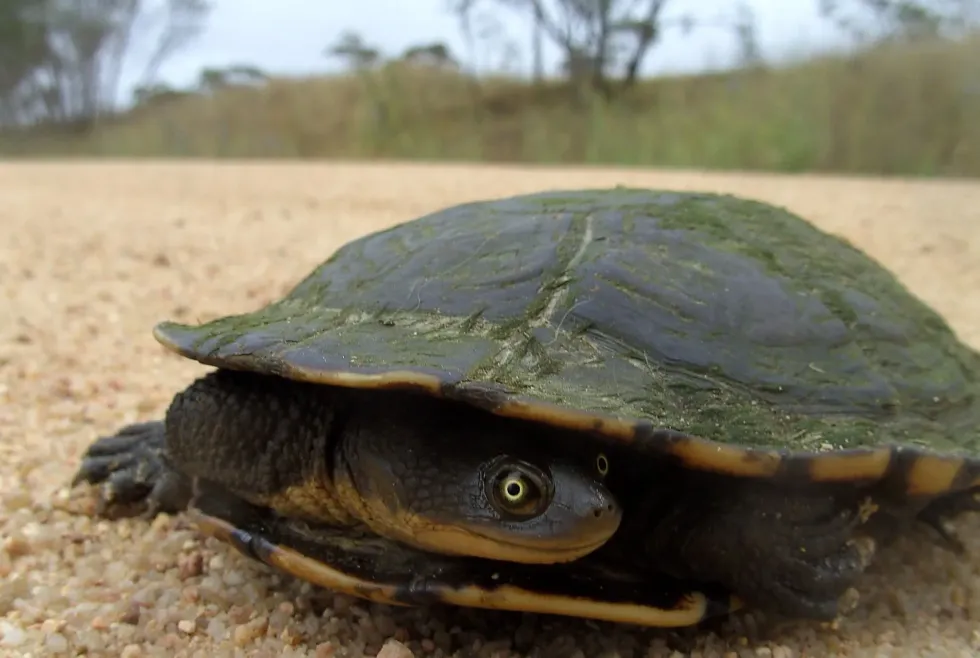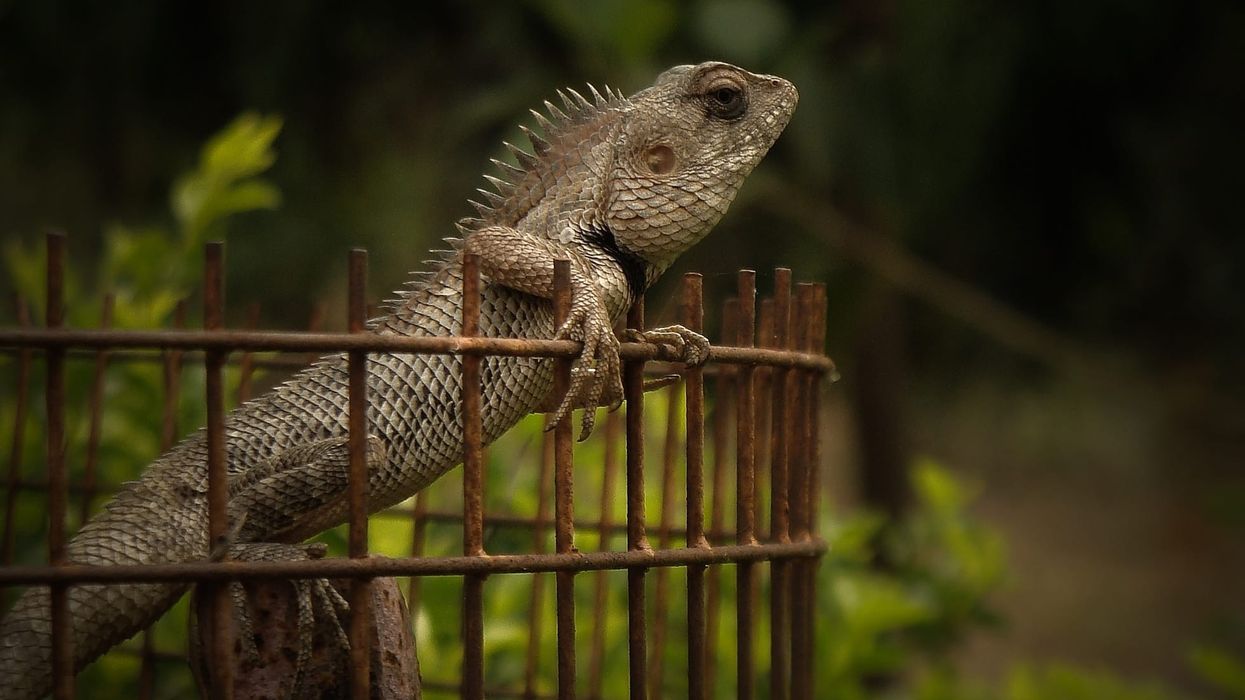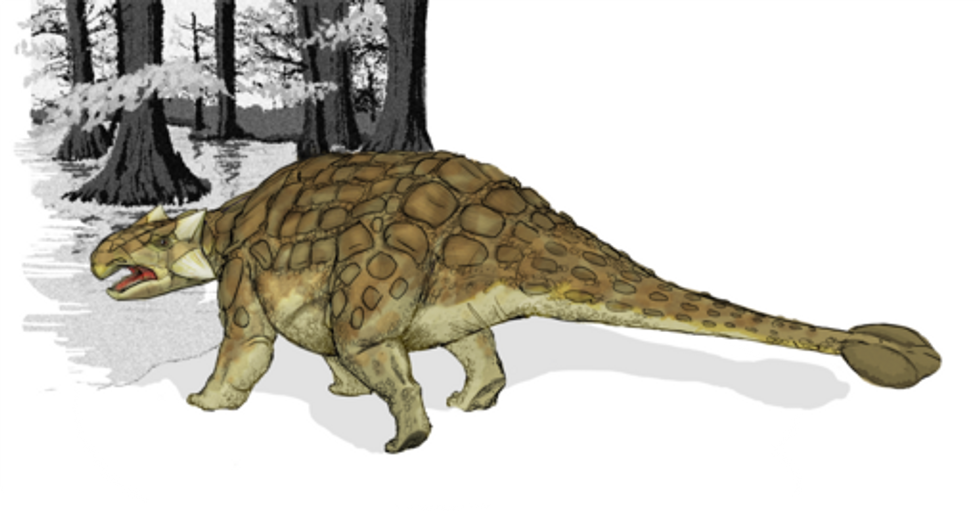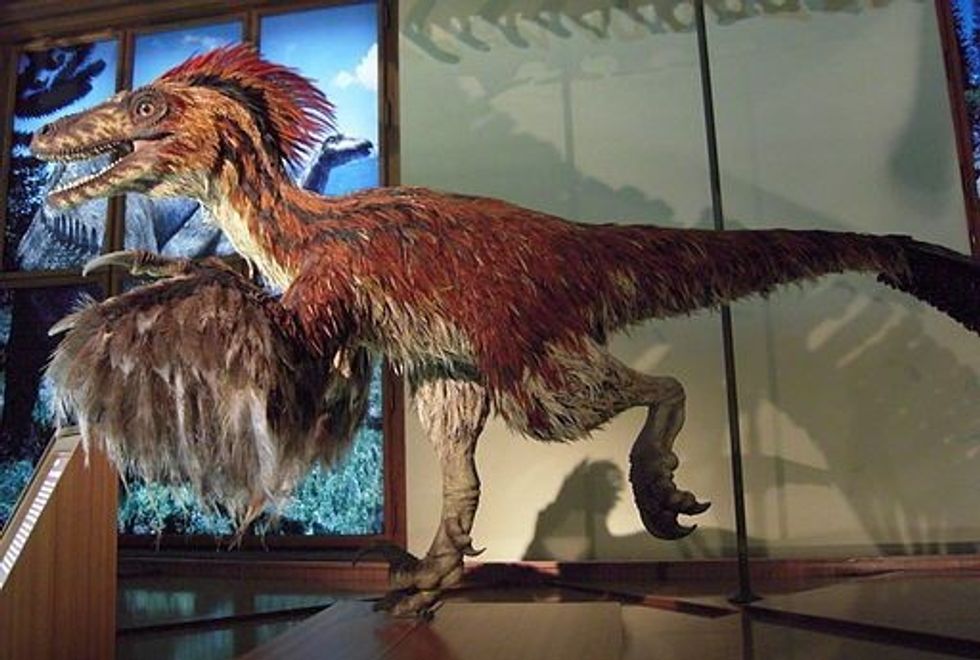Are you fascinated by reptiles like the softshell turtle? Then here we have all the information about another different kind of turtle, the long-neck turtle. Learn all about their feeding habits, nesting habits, habitats, and more.
The long-neck turtle (Chelodina longicollis) is also known as the eastern long-necked turtle, the common long-necked turtle, or the snake-necked turtle. This freshwater turtle is only native to Australia.
The turtles are found in habitats like any still or moving water body or in wetlands. This species of turtle is known for the long and narrow neck on its body. These are medium-sized animals that are about 9.8 in (25 cm) in length.
The sexual dimorphism in the species is very little. The female of the species can be comparatively larger and has a little deeper carapace.
She lays about three clutches of eggs in a year. These turtles are carnivorous in nature and prey on both aquatic and terrestrial animals. Their food includes fish, crustaceans, terrestrial insects, aquatic invertebrates, carrion, plankton, and more.
For more relatable content, check out these soft-shell turtle facts and map turtle facts!
Long-Neck Turtle Interesting Facts
What type of animal is a long-neck turtle?
An eastern long-necked turtle (Chelodina longicollis) is a type of turtle.
What class of animal does a long-neck turtle belong to?
The eastern long-necked turtle belongs to class Reptilia and genus Chelodina of animals.
How many long-neck turtles are there in the world?
The exact populations of the snake-necked turtles (Chelodina longicollis) is not known. However, it is known that they are found in abundance in their geographical range.
Where does a long-neck turtle live?
The snake-necked turtles are only native to Australia. The main habitat range of the turtles is in the southeastern part of Australia around the Murray-Darling Basin area. Specifically, they can be found from the eastern part of Queensland around the Wilton river to the New South Wales border at the western side around the Murray River.
What is a long-neck turtle's habitat?
These long-necked turtles are semi-aquatic freshwater turtles, like painted turtles. They like to live in slow-moving water bodies, like wetlands, or swamps, but a number of them can also be seen living in rivers or streams.
The turtles mainly like to live around places with water. They dwell in the bottom part of the water body.
Even though they like basking in the sun now and then, they will always stay near water. They will move if there isn't enough water in one place and sometimes they even go into a dormant state until their habitat is full of floodwater again.
They can be seen moving long distances to search for the perfect place to stay. The turtles spend their dormant state in forests, where they can make burrows in the soil under the trees in logs or shrubs.
Who do long-neck turtles live with?
Snake-necked turtles are usually solitary in nature. If they have to move from one place to another in search of the perfect habitat, they move alone trying to get in the way of others of their own species. The turtles only come together during the breeding season.
How long does a long-neck turtle live?
The eastern long-necked turtle lives for about 31-37 years. Females usually live longer than males in harsh conditions. Mainly because their larger bodies help the females to withstand those conditions. During dry spells, when there's fierce competition within the turtles to survive in the lakes, many die. The ones living in wetlands live comparatively longer.
How do they reproduce?
The breeding season for the snake-necked turtles occurs around September-October. The males of the species reach sexual maturity at the age of seven or eight years and the females of the species reach sexual maturity when they are 10-12 years old.
The courtship rituals and the reproduction process for this species are not that complicated as the others of the turtle species. During the breeding period, the males are known to journey through a long-distance during this time to find an optimum number of females to copulate with.
The turtles are known to be polyandrous. The only thing known about their courtship ritual is that the males bob their heads.
Following this, the turtles mate in the water. After mating, the female will journey quite a distance to find the perfect spot to lay her eggs. The nesting sites can be ridges, crests, or even gravel roads.
The gestation period is around 110-185 days, and following that, the female lays up to 24 eggs. The females lay around three clutches in a year.
After laying the eggs and hiding her nest, the female leaves the eggs to incubate by the heat and pressure of the nest. The incubation period ranges between 120-150 days.
Not much is known about the parental care done by the species. The eggs hatch and juveniles come off the nest around the Autumn season, during the time of January to late April.
What is their conservation status?
The eastern long-necked turtle is Not Listed under the International Union for Conservation of Nature Red List. The species is not facing any great threat at this moment and in their habitat, they are found in abundance. Hence we can assume that the populations are not endangered in any way at this moment.
Long-Neck Turtle Fun Facts
What do long-neck turtles look like?

Snake-necked turtles are medium-sized turtles. The shape of their carapace is oval. The color of the upper shell, or the carapace, is light brown to black, whereas the color of the ventral shell or the plastron is cream with dark-colored lined markings.
The most unique part of the turtles is their neck, which is long and narrow. The heads are small. The upper part of the neck is brown to gray, whereas the ventral part is yellow-colored.
The neck is full of small tubercles. The limbs on the body are usually brown to dark gray colored.
The young ones are usually dark gray to black colored. An orange stripe can be seen running on any side of the jaw and neck. Some orange spots can be seen on the ventral shell of the hatchlings as well.
How cute are they?
These long-necked turtles can seem cute to many people who are enthusiasts of reptiles. However, these turtles with their long necks can seem a little scary to many people as well. They are not known to be aggressive to humans, and not even towards individuals of their own species. This trait only adds to their charm.
How do they communicate?
The snake-necked turtle communicates by touch and through chemical means. The turtles get a sense of their surrounding environment by smell, touch, and visual means. The males bob their heads and swim at a fast speed to attract the females.
They also release pheromones. The species is known to be a pungent stinker. The turtles release a foul-smelling musk to ward off predators.
How big is a long-neck turtle?
An eastern long-necked turtle grows up to about 9.8 in (25 cm) in length. These long-necked turtles are about nine times smaller in length than one of the biggest turtles of the world, the leatherback turtle. Leatherback turtles can grow up to around 70.9-86.6 in (1.8-2.2 m) in length.
How fast can a long-neck turtle move?
The exact speed at which the snake-necked turtle moves is not known. However, they are known to move at a moderate speed and they are good swimmers as well. During the breeding season, the males swim at a fast pace to catch the attention of the females.
How much does a long-neck turtle weigh?
These long-necked turtles are medium-sized turtles. They weigh only about 15.6-28.8 oz (442-816.5 g).
What are the male and female names of the species?
The males and the females of the snake-necked turtle have no specific names.
What would you call a baby long-neck turtle?
Babies of eastern long-necked turtles are called hatchlings.
What do they eat?
The snake-necked turtles are primarily known as carnivorous animals. Their aquatic diet consists of food like fish, carrion, tadpoles, aquatic invertebrates, plankton, and crustaceans.
The land-based diet includes food like different kinds of insects. These turtles are known as ambush feeders. With an open mouth, they suck in a lot of water which also contains their prey, like fish and tadpoles.
Are they dangerous?
The common long-necked turtle is not dangerous at all. They are not known to be aggressive towards humans. They are not even aggressive towards others of their own species.
Would they make a good pet?
The common long-necked turtle is kept as a pet in many homes in Australia. The snake-necked turtle can be a bit high maintenance to keep as a pet, but the turtles are worth it.
In order to keep them healthy and alive, you will need to replicate the habitat in which they are known to live in the wild. If you decide to keep them as pets, you will need to purchase a heater or heat lamp for ideal living conditions.
Did you know...
The facts about the reproduction of the common long-necked turtle (Chelodina longicollis) tells us that they even mate with Cann's snake-necked turtle (Chelodina canni). The mating happens rarely as the geographical range of the two species rarely meets, but it has been known to happen.
When the snake-necked turtle is dormant, it can stay out of the water for a long time, but otherwise, it can stay out of water for only about three hours.
Do long-neck turtles have teeth?
This common necked turtle doesn't have any teeth. It strikes with the strong edge of its beak-like mouth. This helps them tear away the prey while eating.
Is the long-neck turtle endemic?
Yes, the common long-necked turtle is endemic to Australia. It's only native to the freshwater river basins of the country. Another turtle that can be found in Australia is the green sea turtle.
Here at Kidadl, we have carefully created lots of interesting family-friendly animal facts for everyone to discover! Learn more about some other reptiles from our monitor lizard facts and red-bellied black snake facts pages.
You can even occupy yourself at home by coloring in one of our free printable long-neck turtle coloring pages.

